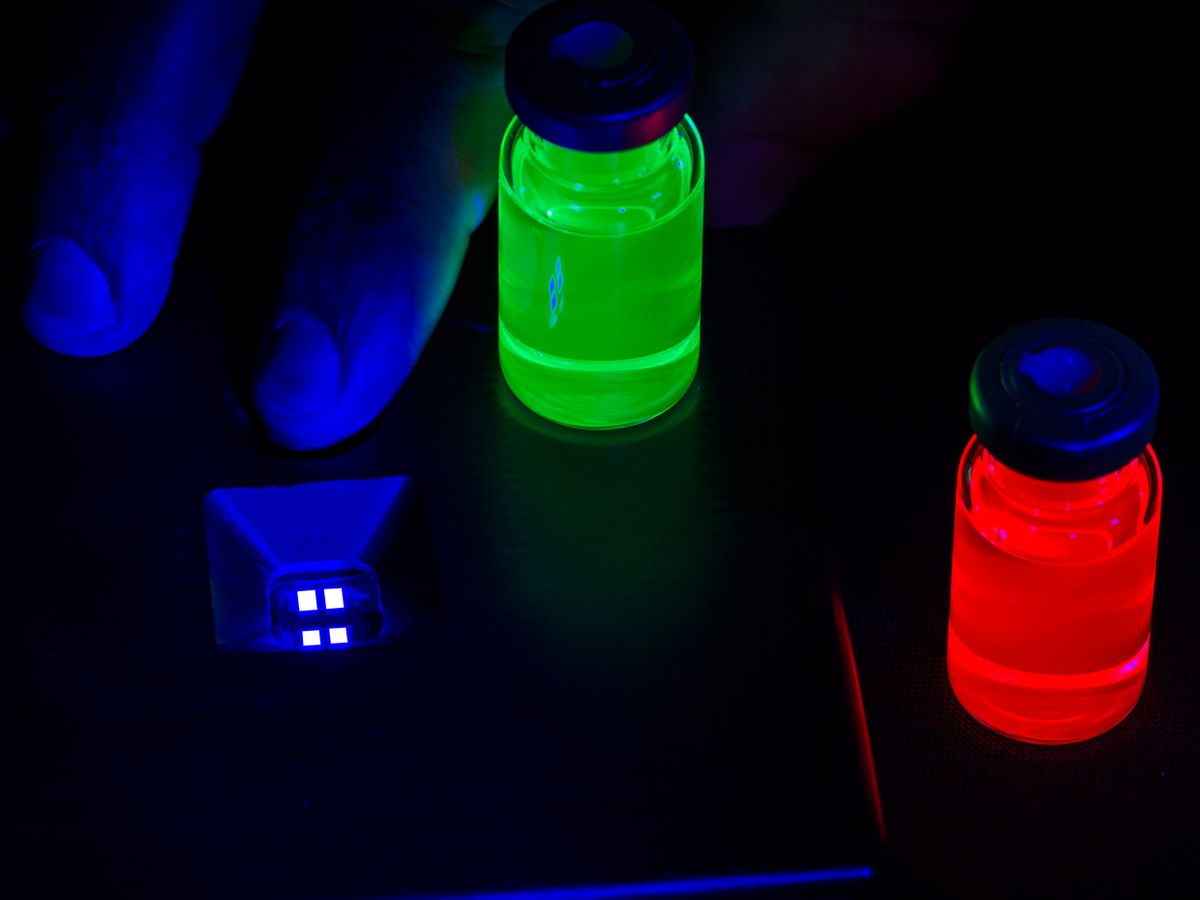Quantum dots have established themselves as a go-to material for photoluminescence, in which light is emitted when stimulated by a light source. Based on this capability, companies such as Nanosys have been able to help display companies like Samsung capture a growing segment of the display market from competing technologies such as LED-backlit LCD and organic light-emitting diode (OLED) displays.
Nanosys currently has more than 60 quantum dot-enabled products on the market, and the company now wants to make a big push to expand the capabilities of quantum dots beyond just photoluminescence into the area of electroluminescence, where photons are emitted in the presence of an electric field or current. Nanosys expects this development to lead to a new era of what Nanosys is terming: Electro Luminescent Quantum Dot (ELQD) displays.
Executives at Nanosys believe that ELQD displays have the potential to disrupt the display industry over the next decade. The displays don’t need a backlight and, because each subpixel is addressable, the display wastes no energy while the light travels from the backlight to the pixel. This should translate into lower power consumption, along with wider viewing angles, purer colors, and perfect black levels, according to Jeff Yurek, Director of Marketing and Investor Relations at Nanosys.
“We expect to see these displays in the three to five year timeframe,” said Yurek. “We think that quantum dots have the potential to deliver on the promise of OLED.”
It has long been promised that OLEDs would someday be available in low-cost printed form. While progress continues to be made, OLEDs with high-performance blue have remained tantalizingly just out of reach.
During OLEDs travails, quantum dots have quietly been offering a fundamentally better emitter material, with no known physical limitation in blue performance. Combined with the reliability of an inorganic material, which offers better oxygen and moisture stability than the organic materials used for OLEDs, quantum dots appear to have the better hand of cards.
This is all leading to the executives at Nanosys to start looking at quantum dots in applications beyond the traditional TV, monitor, and smartphone markets to the printed display market. Nanosys has termed their new foray into printed displays “Active Surfaces.”
“Printed quantum dots can really change how we think about our relationship with technology,” said Yurek. “We are thinking a lot about moving away from a device-centric world to a world of ‘Active Surfaces.’ These surfaces are interactive; they can display information or disappear into a home’s décor or even clothing. They need to be bright, power efficient, sensor-enabled, and rugged.”
Today, cost remains a huge barrier in making the Nanosys’ “Active Surface” dream a reality. Nonetheless, quantum dot devices have proven themselves to be inkjet printable. A number of research organizations, such as Seoul National University, have demonstrated that it can be done.
“If we can get the cost of making a display down to $100 per square meter, which is basically the same cost as printing a high-resolution poster or printing a T-shirt, then displays could be everywhere,” said Russell Kempt, vice president of sales and marketing at Nanosys. “That’s our vision and we believe that the quantum dot material is the only material that has the opportunity to achieve this.”
With three to five years remaining before this technology is on the market, Nanosys is focused on lowering the cost of active displays to match that of standard building materials so that literally anything in a home can have a display. To achieve this goal, the company is looking beyond today’s semiconductor manufacturing processes to disruptive new processes such as inkjet printing, which will only be enabled by new materials.
Yurek and his colleagues believe that quantum dots can deliver on the promise of low-cost manufacturing. In fact, Yurek says that all of the work being done today on ELQD displays is being done using printing techniques.
There will not be the kind of awkward attempt to switch from costly vapor deposition manufacturing to printing, which is currently happening for OLEDs, because we are already there, according to Yurek.
He adds: “With true low-cost printing, it may soon be possible to bring displays to markets and applications where today’s display technologies are either prohibitively expensive or too bulky.”
Dexter Johnson is a contributing editor at IEEE Spectrum, with a focus on nanotechnology.



